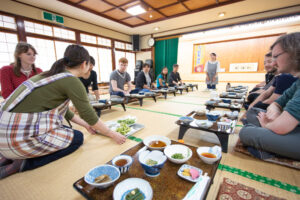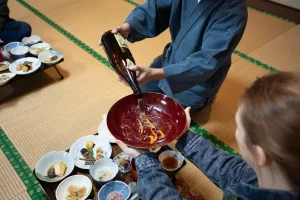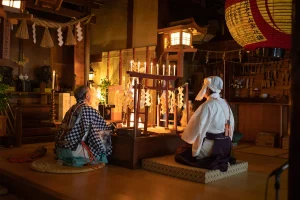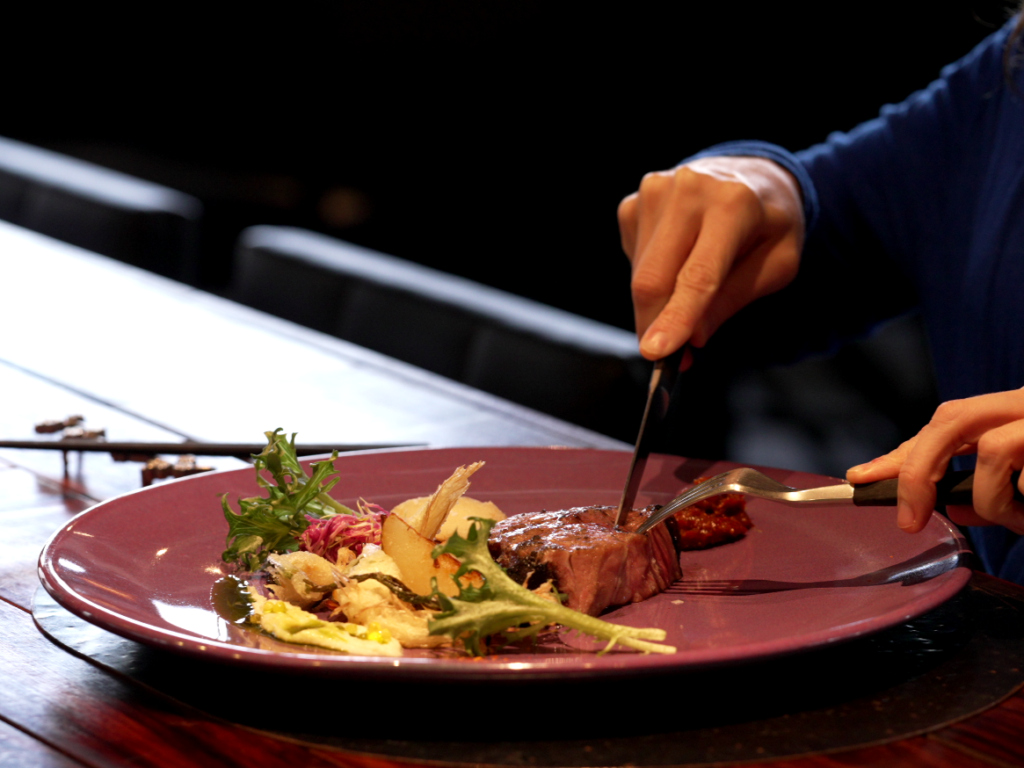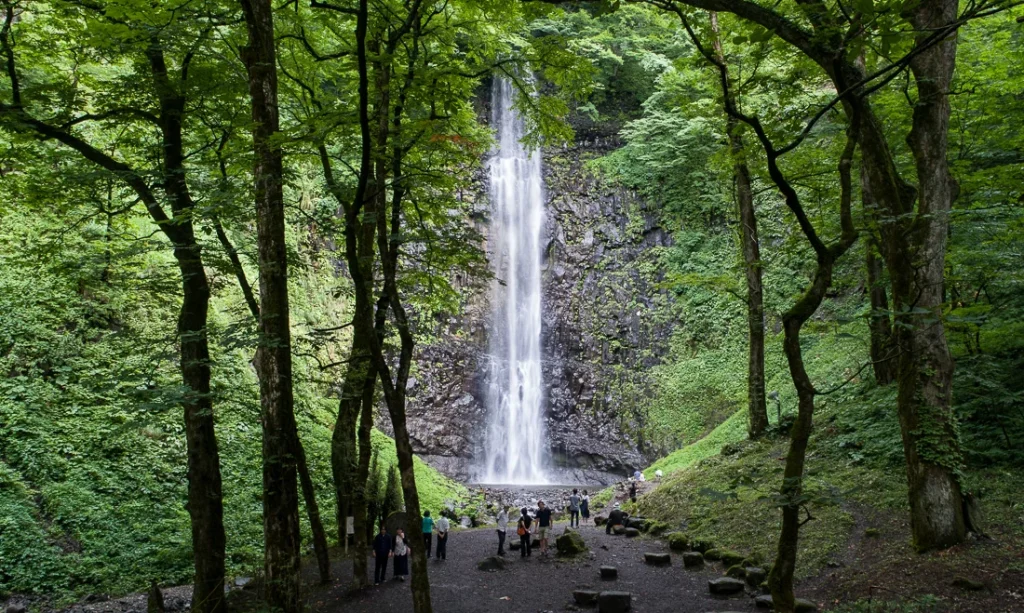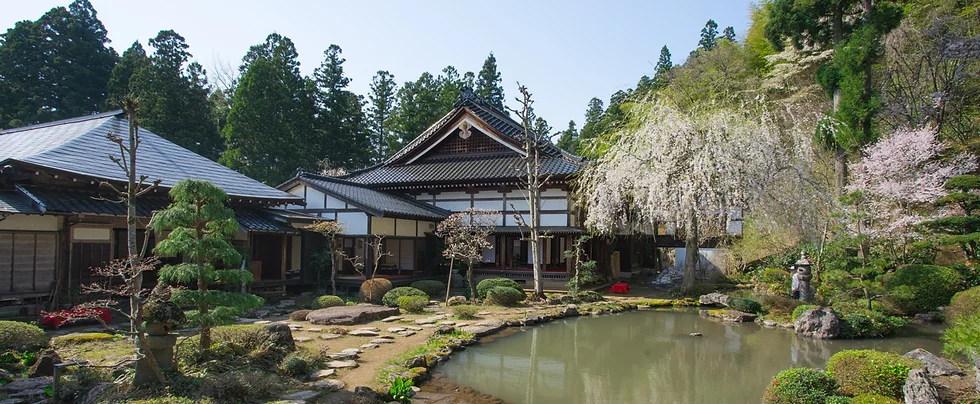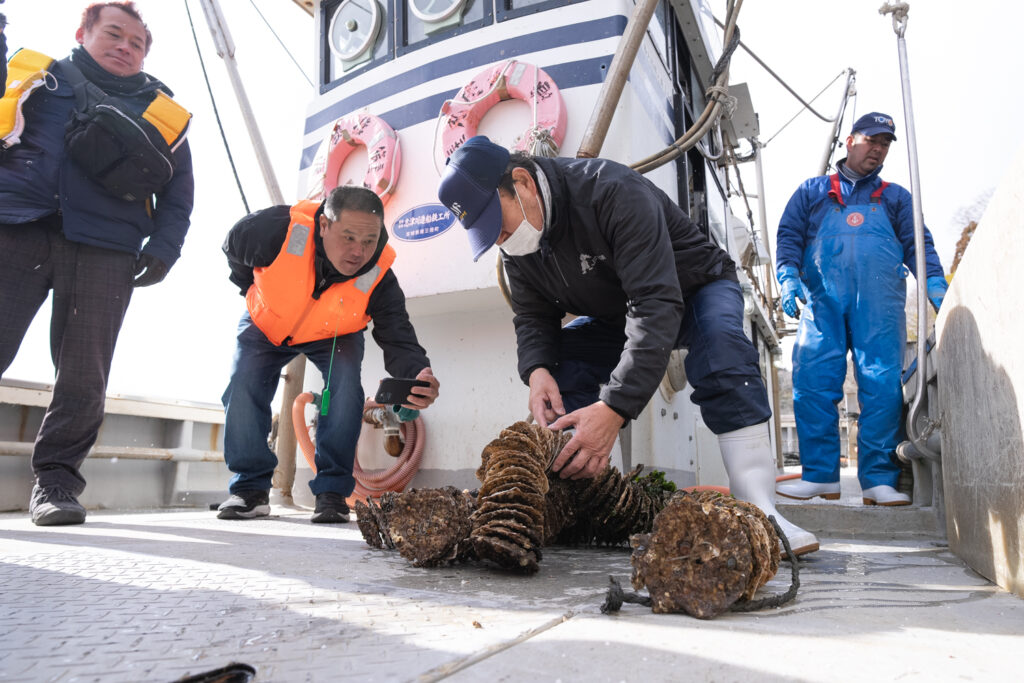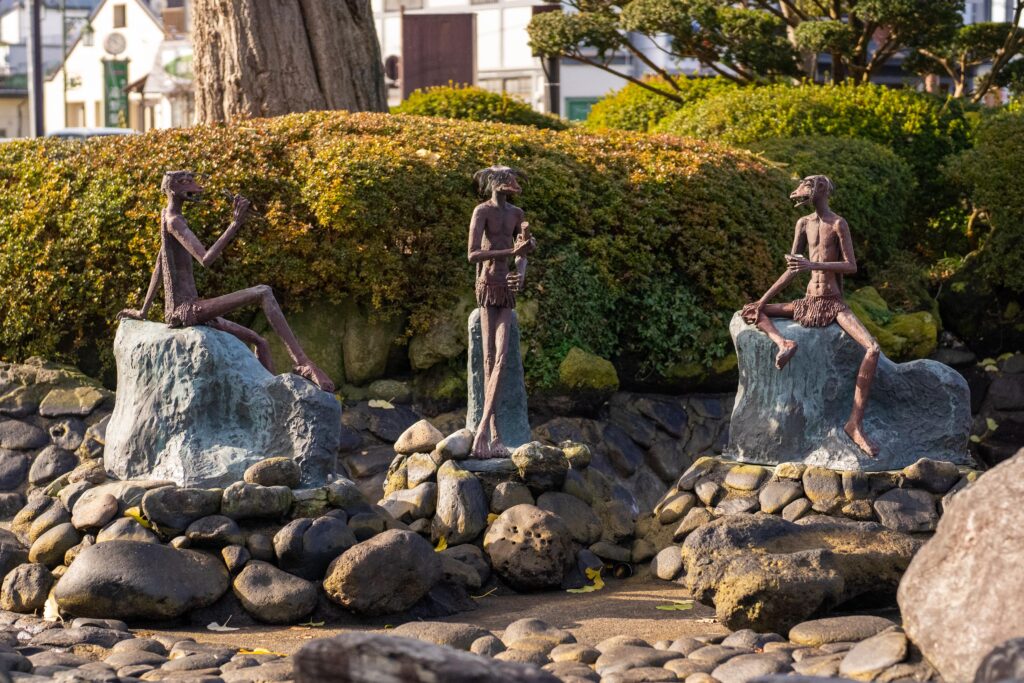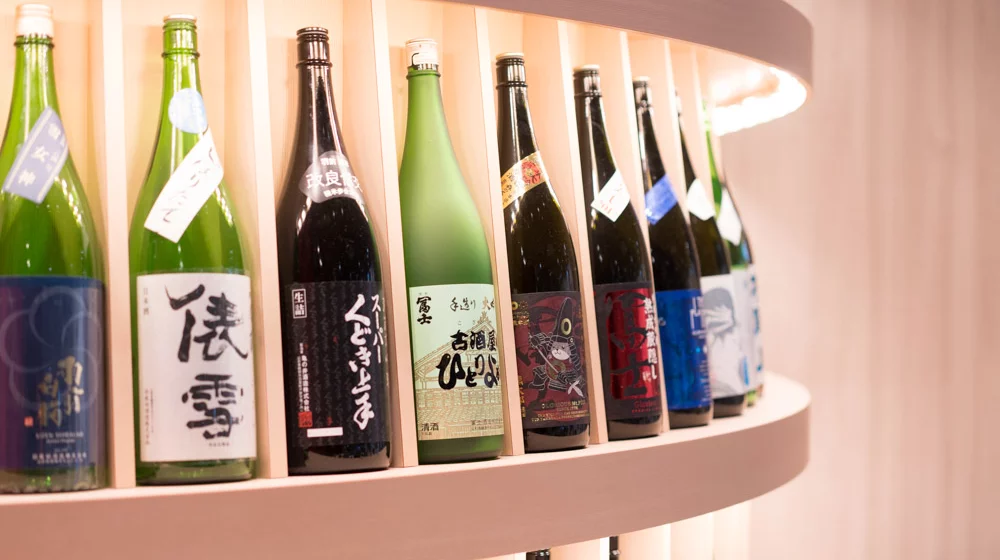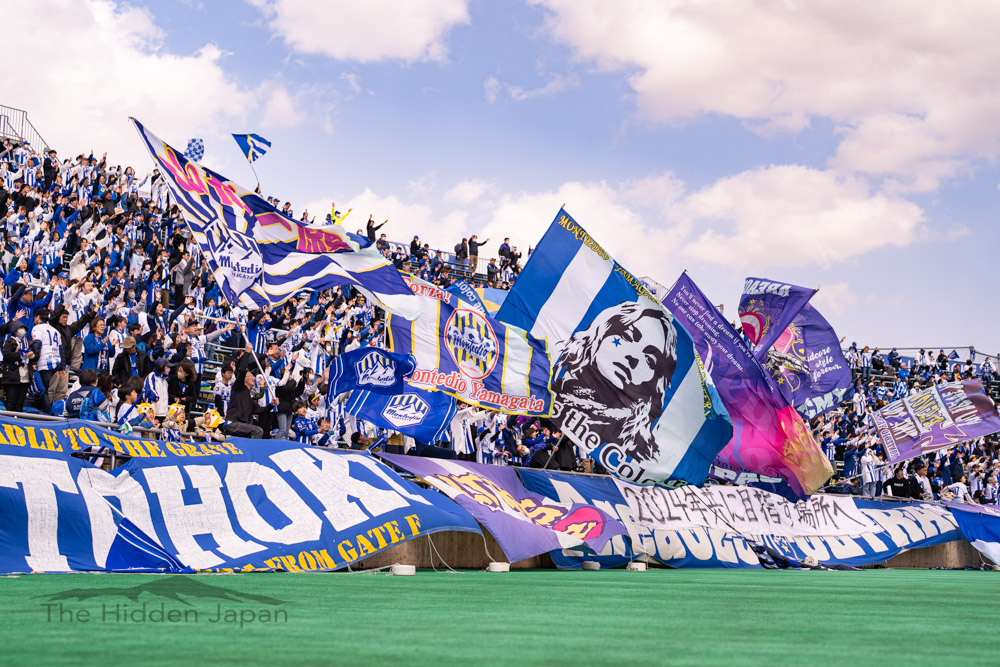
Yamagata Prefecture
Mt. Haguro represents the present and is the start of a sacred pilgrimage known as the Journey of Rebirth.
As one of the mythical Three Holy Mountains of Dewa (Dewa Sanzan), Mt. Haguro boasts incredible pristine natural beauty and spiritual wonder that has drawn visitors to its peak since the 6th century A.D. Mt. Haguro represents the present and the world of earthly desires and is the start of a sacred pilgrimage known as the Journey of Rebirth that involves traveling through the present, past, and future on these three holy mountains. Those who partake in this journey are known as Yamabushi, mountain monks who revere nature and follow the ancient religion of Shugendo.
The 2,446 stone steps of Mt. Haguro form a stunning 1.7km walk through a towering cedar forest that is lined with temples and shrines for the many deities that are believed to dwell on this mountain. This includes Uganomitama-No-Mikoto, the god of agriculture and Ideha-No-Kami, the god who watches over all of what was once the Dewa Province. Other notable sites include the Five Story Pagoda, a towering wooden structure that has been designated as a national treasure of Japan and the Dewa Sanzan Shrine at the top of this mountain.
At 414 meters (1358ft) this mountain is also the most accessible of the Dewa Sanzan and is the only one of these three mountains that is open year-round. Visitors are highly encouraged to climb up the steps of Mt. Haguro and enjoy the silence and serenity of this holy path that has drawn pilgrims here for centuries.
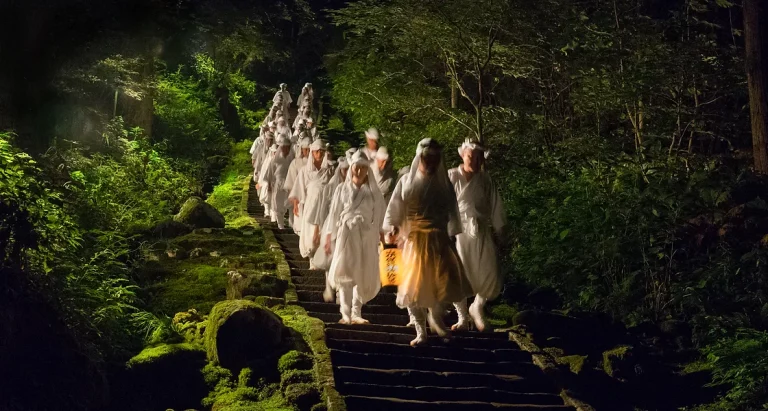
Quick Info
Cost
Opening Hours
All year-round
Average Duration
Approximately 1.5 hours if you visit the 5-story pagoda and roughly 3.5 hours if you climb all the way to the top and back down.
Address
Haguroyama Haguromachi Touge, Tsuruoka, Yamagata 997-0211
If you search Mt. Haguro in Google Maps, it may give you directions to drive to the top of the mountain. Those wishing to climb the mountain from the base should use this address: 〒997-0211 Yamagata-ken, Tsuruoka-shi, Haguromachi Toge, Toge-3
Other tips
Contact us for guided tours.
The trailhead of Mt. Haguro can be reached by bus, but a rental car is recommended due to the limitations of buses in the rural outskirts of Tsuruoka City. See available rental car options here.
Shojin Ryori can be eaten here with advance reservations.
You may also climb up the mountain on foot and take the bus back down.
Boots are required during the winter due to snow.
Lodging is available next to this mountain, see below.
Shukubogai: Row of Pilgrim Lodges
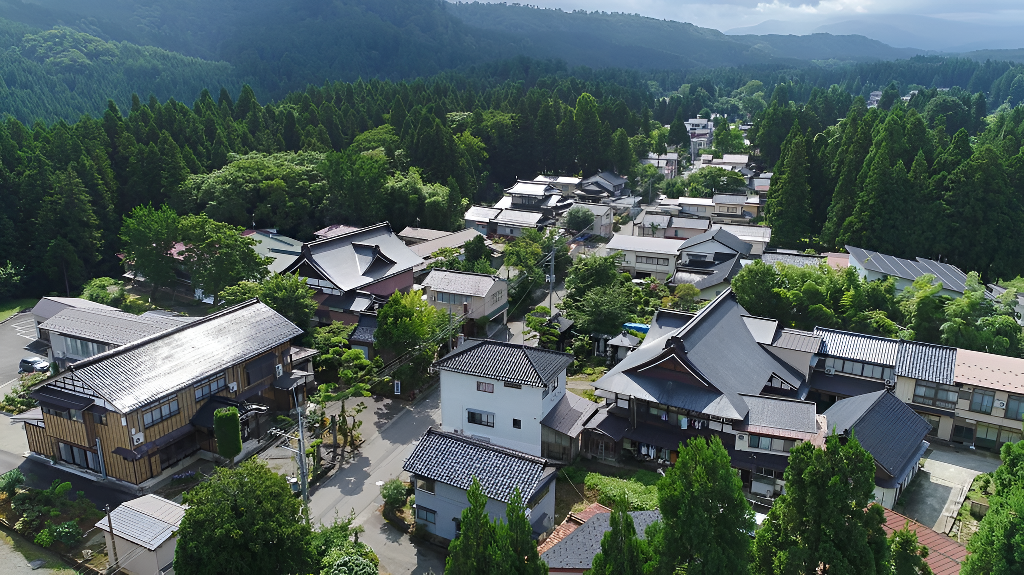
In order to reach Mt. Haguro you will first need to pass through giant red Tori gates that mark the entrance into the township of Toge. This area once hosted tens of thousands of pilgrims from around Japan when this region became a major spiritual destination during the Edo Period. This included over 360 Shukubo pilgrim lodges, a number that has since dwindled down to 29. However, the lodges that remain preserve the centuries of mystical charm and deep religious history of this religious community. These lodges also offer traditional lodging and a variety of Yamabushi mountain monk training programs that are open to international visitors.
The Shime (shi-meh) rope around the Tori gates of these lodges symbolize the border into the Shukubo. There are many other Tori along the street that do not have Shime on them showing places that were once Shukubo themselves. Some of Shukubo have the character in ‘院’, which traditionally meant a Shukubo of a higher class, but these days has no special significance.
The community of this township also hosts the annual 100-day Winter Peak Ritual that concludes with the Shoreisai Festival on New Year’s Eve at the top of Mt. Haguro.
The Shukubo provide three main services for pilgrims; Sendatsu pilgrim guides who lead expeditions to the Dewa Sanzan, Shojin Ryori (ascetic cuisine for worshippers), UNESCO-certified vegan meals that consist exclusively of vegetables sourced from the mountains for pilgrims to purify their bodies before entering the mountains, and white Shiroshozoku garments for the pilgrims that symbolise the beginning of their rebirth.
Any visit to the Dewa Sanzan wouldn’t be complete without staying in a Shukubo on Mt. Haguro, many of which were originally built before their current iterations that date back to the mid-Edo period around 300 years ago.
The largest and most accessible of these pilgrim lodgings is Miyatabo. This lodge is welcoming of international guests and hosts a special fire blessing in the morning to bless travelers before they journey into the Dewa Sanzan mountains.
A miniature shrine in front of Miyatabo holds part of the rope from Dewasanzan Shrine. This rope can be seen at other Shukubo, and the black and white rope must face Mt. Gassan meaning the ropes on the left side of the road are all placed reverse to those on the right. As these ropes are installed when the structures are built, it is possible to gather an idea of how old the structures are just by looking at the ropes.
Another notable point is that these shukubo also have tori gates at their entrances as they themselves also serve as places of worship for the gods of the Dewa Sanzan.
Reservations for Miyatabo and other shukubo typically are around 9000yen per guest and include shojin ryori meals for breakfast and dinner. If you are interested in booking through us, as their website is in Japanese, contact us for a price.
These shukubo also lead Yamabushi training programs on the Dewa Sanzan and many of them offer programs that are open to Japanese and international travelers.
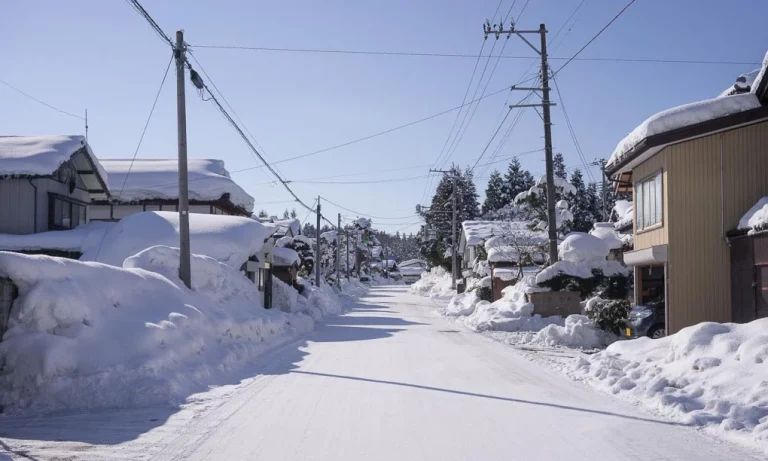
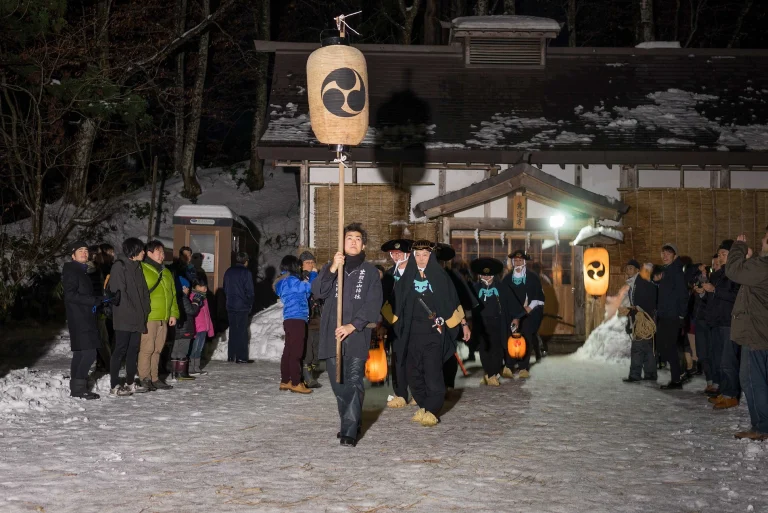
Zuishinmon
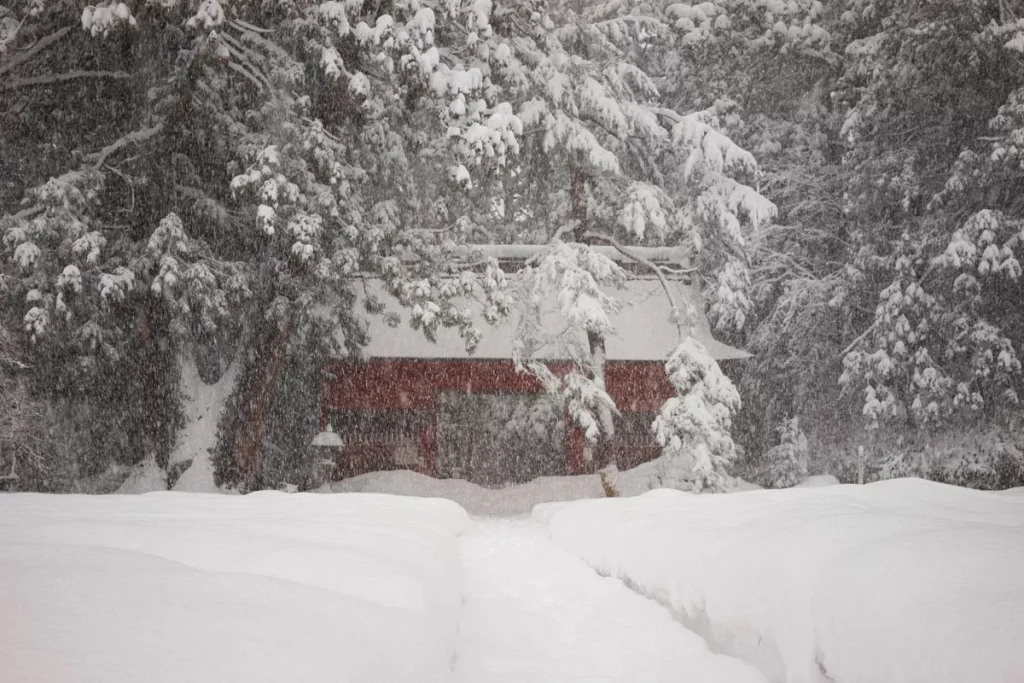
Originally known as Niomon, the gate of dual deities, until the separation of Shintoism and Buddhism in the Meiji era, Zuishinmon is the impressive gate that welcomes all into the sacred Mt. Haguro. The statues of Nio that were in the gate are now enshrined in Shozen’in Koganedo at the foot of the mountain, and the current gatekeepers are the two deities Raijin and Fujin, the god of thunder and wind respectively.
In front of the gate is the Tenpaiseki, a stone that was originally placed in the middle of the Tenpai-zaka, the slope on the road along the row of Shukubo lodges. The Tenpaiseki was pulled by rope into its current location before the road was paved in 1940.
The concrete Tori gate directly in front of Zuishinmon was originally in the middle of the road in front of Koganedo, and was moved to allow access for vehicles.
If you look carefully at the right side, you can see where some Chinese characters were scratched off more than 150 years ago. The characters once read the names of a Buddha, and were erased after Shinbutsubunri, orders for the expulsion of Buddhism in Japan at the start of the Meiji Restoration.
During this time many Buddhist temples, images, and texts were destroyed, and Buddhist monks were forced to become secular. However, some of the Buddhist relics were made Shinto, considered a ‘real’ Japanese religion at the time. The effects of this can also be seen with the names of the deities enshrined along the stone stairway; the deities currently enshrined are in fact Shinto approximations of the Buddha that were originally adorned there.
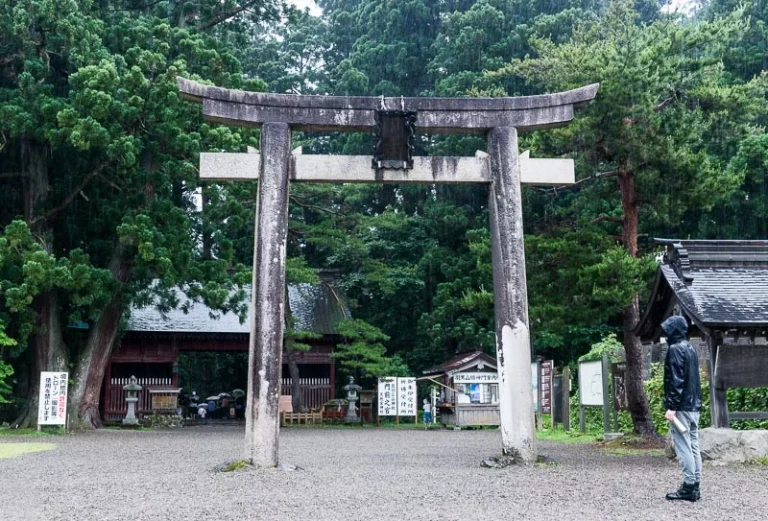
Stone Stairway up Mt. Haguro
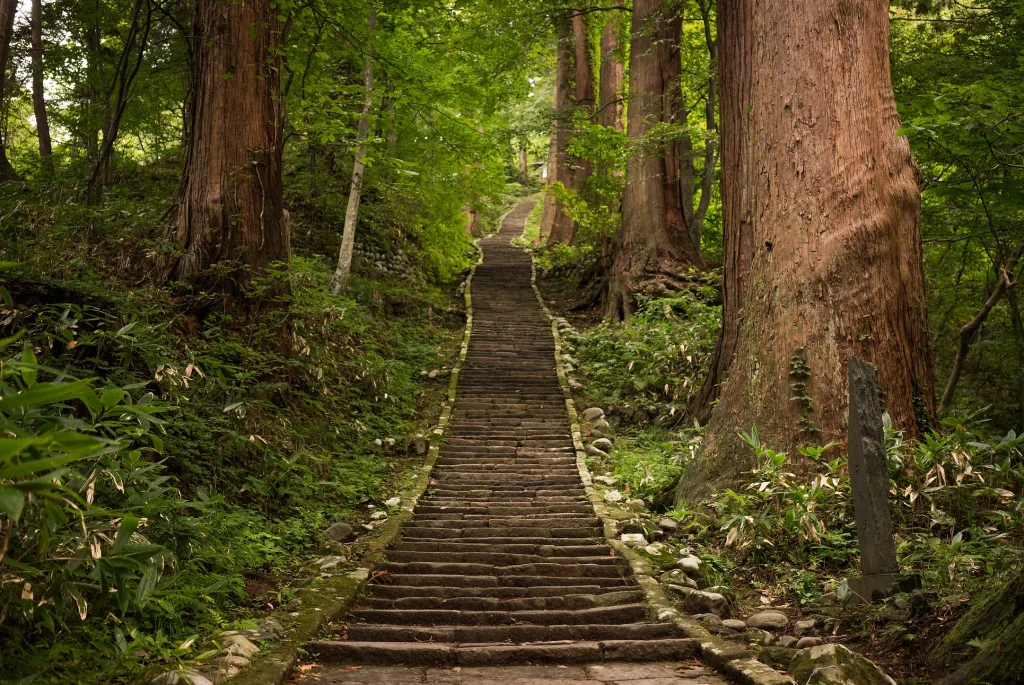
The 2,446-step stairway up Mt. Haguro that begins once you pass through Zuishinmon stretches right to the Dewa Sanzan Shrine at the top of this mountain. Tenyu, the 50th chief priest of the Three Mountains of Dewa, spent roughly 13 years constructing the 1.7km path in the 1600s.
The walk up is not too difficult and can be completed by anybody in good health. There are plenty of places to stop and catch your breath and there is even a teahouse half-way up the path.
These steps in themselves are designated as a national treasure of Japan and blend beautifully into the forest. Be sure to turn around from time to time to admire the incredible work of the priests of this mountain that have maintained this path for centuries.
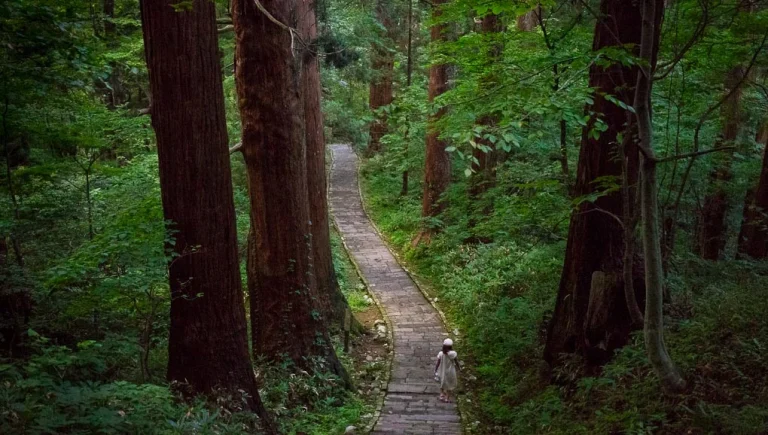
Allow about 1.5 hours to walk up, and if you are feeling lucky, try to find the markings of gourds, bowls, or ceramic sake jugs carved into some of the steps as it is said that if you find 33 your wish will be granted.
Note that in the time in between fall and winter, Mt. Haguro can become quite dangerous to walk on. This is due to very slippery ice that forms during this time. Without any snow, these steps can become nearly impossible to walk on.
The Haraigawa River
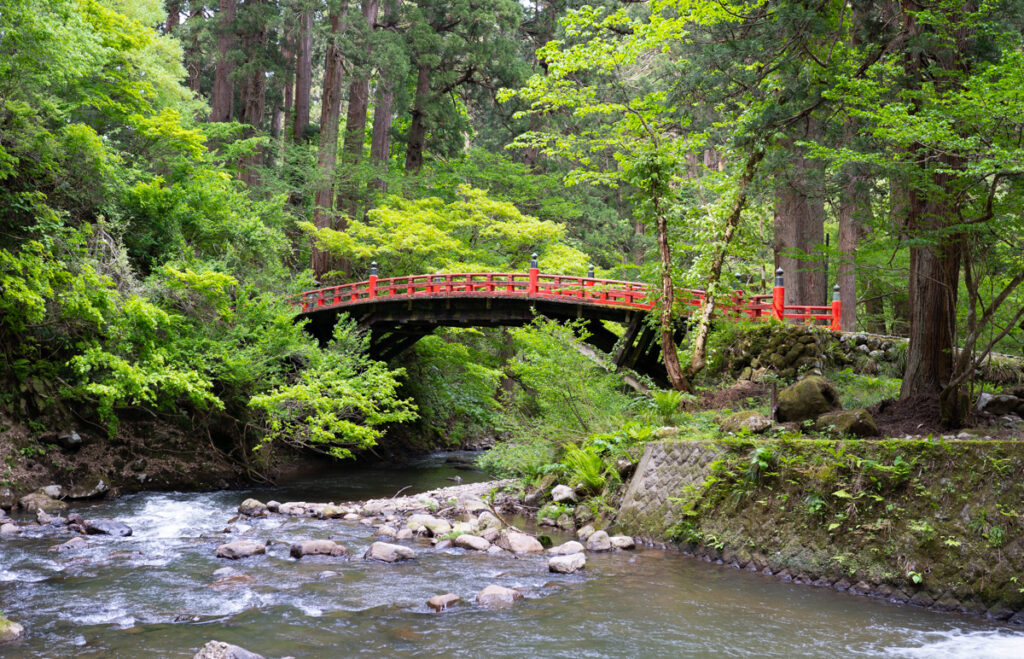
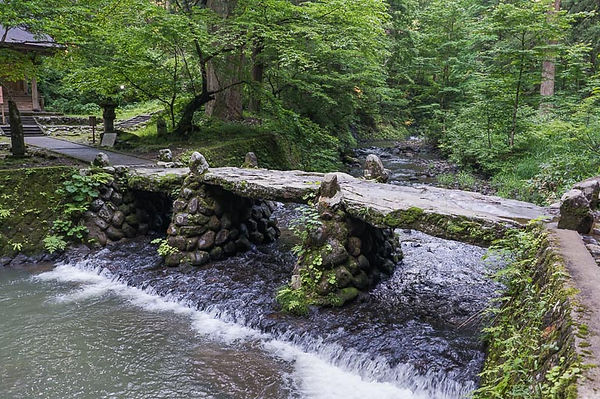
In ancient times women weren’t allowed past the Haraigawa River as it was deemed too dangerous, so they prayed at the Shirayama Shrine to the right just before the bridge instead. This changed during the Meiji Restoration in 1868 with the Shinbutsubunri policy enacted by the Japanese government, when Mt. Haguro became a Shinto Mountain.
The Shinkyo bridge that crosses the river was built in 1975, and the waterfall that joins the Haraigawa river was diverted from a river over 8 kilometres (5 miles) away on Mt. Gassan by monks in the 1600s.
The flow of the water varies greatly depending on the season, flowing ferociously during winter, and sometimes coming to a complete stop in summer when the water is needed for planting rice. Here you may also be able to witness Yamabushi taking part in Takigyo, a ritual of praying to the waterfall, a deity itself, while inside the waterfall. This can be experienced on Yamabushi expeditions where the guides also speak English.
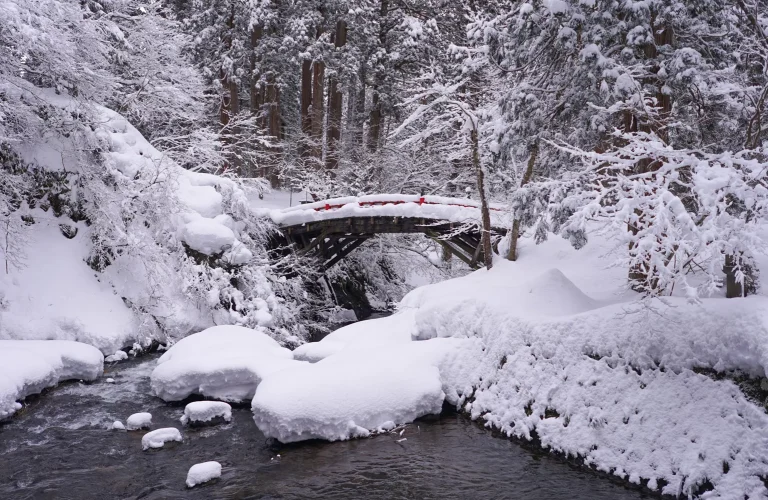
The Grandpa Cedar Tree (Jijisugi)
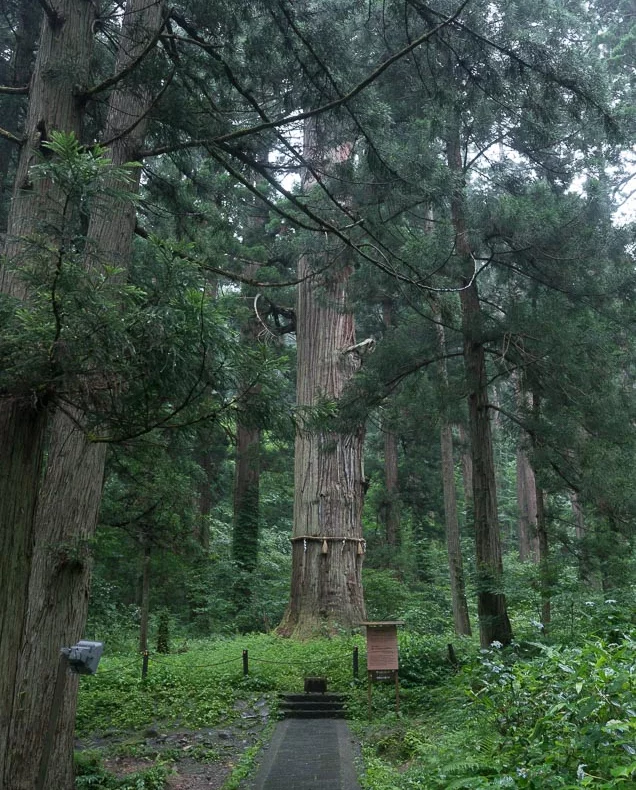
After crossing the bridge over the Haraigawa, the path meanders up the hill to where a giant cedar tree is enshrined. This is the Grandpa Cedar Tree, Jijisugi, and of the estimated 600 cedar trees on Mt. Haguro, the Grandpa Cedar is thought to be both the oldest at over 1000 years of age, and the tallest at 43m in height.
The Grandpa Cedar Tree has been a widower since he lost his partner, the Grandma Cedar Tree, more than 100 years ago.
The Five-Storied Pagoda
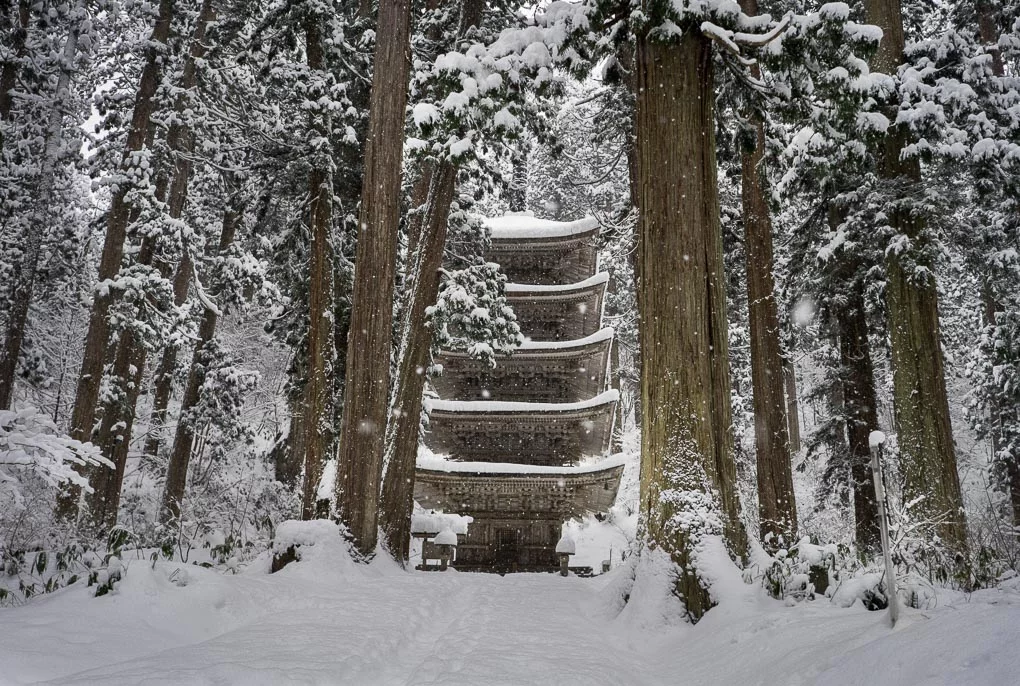
Mt. Haguro of The Dewa Sanzan is home to the oldest Five-storied Pagoda in all of Tohoku. When Haguro Town was amalgamated into Tsuruoka in 2005, the city became one of the only municipalities in Japan, let alone the world, to possess two Five-storied Pagodas, the other located at Zenpoji.
Just past the Grandpa Cedar Tree stands the imposing Five-Storied Pagoda. Originally constructed during the Heian Period (794-1185), the current structure is said to have been rebuilt in 1372. The pagoda preserves the original natural color of the wood in what is called Shirakizukuri, and no nails were used in its construction.
Each roof has been built in an ancient Japanese style called Kokerabuki, and unlike other pagodas found in Japan they are all the same size.
This is so only the top roof has to counteract the weight of the snow in an area renowned for snow where sometimes up to 3 meters (10 feet) settles.
For centuries the people of the Dewa Sanzan have religiously taken turns to climb up the middle of the pagoda and clear the snow from the roof each year. This pagoda also has an earthquake dampening system inside of it in the form of a giant swinging pendulum to counteract the shakes and swaying that could topple this tower.
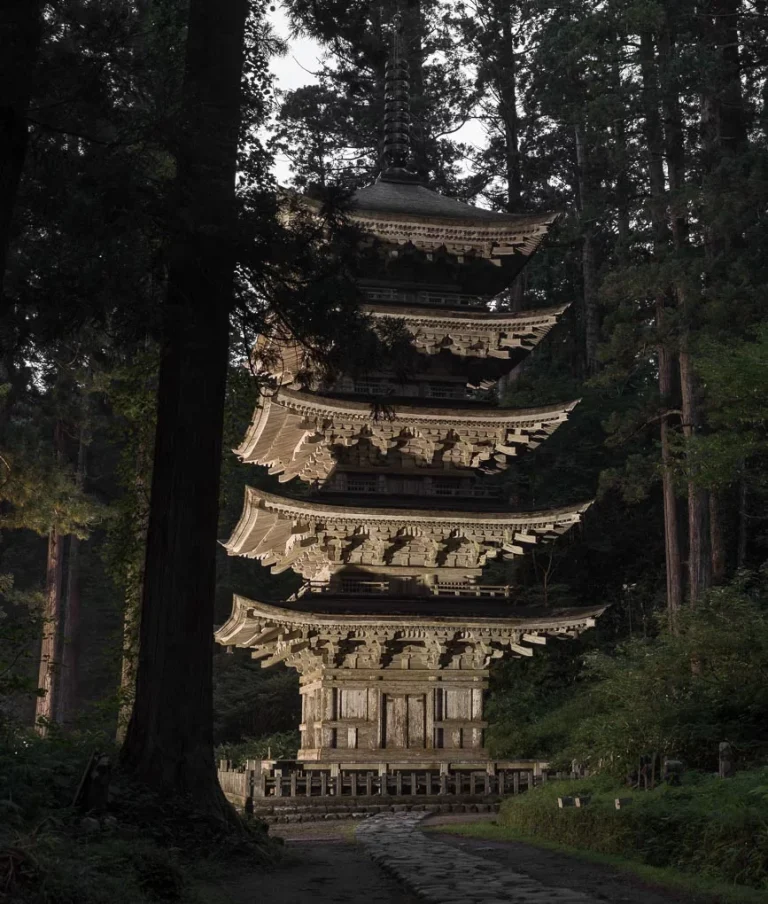
Dewa Sanzan Yamabushi Programs
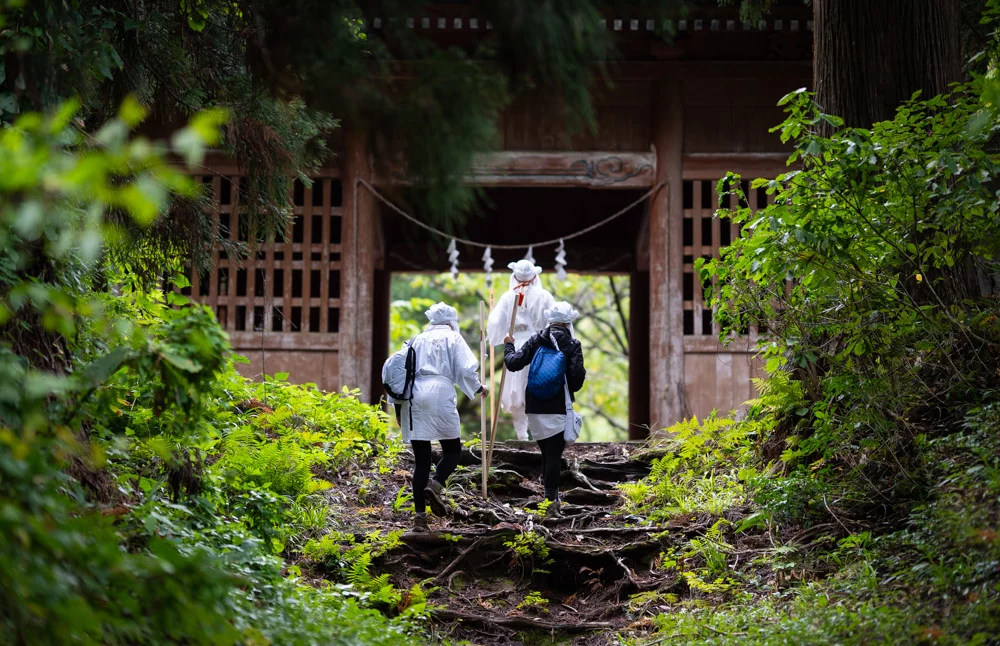
The yamabushi monks of the Dewa Sanzan lead a number of special training and experience programs for both Japanese and international travelers.
Those willing to be open minded and respectful of their ancient traditions are welcome to join their rituals in the pristine nature of Mt. Haguro and the other Dewa Sanzan.
Dewa Sanzan Shojin Ryori
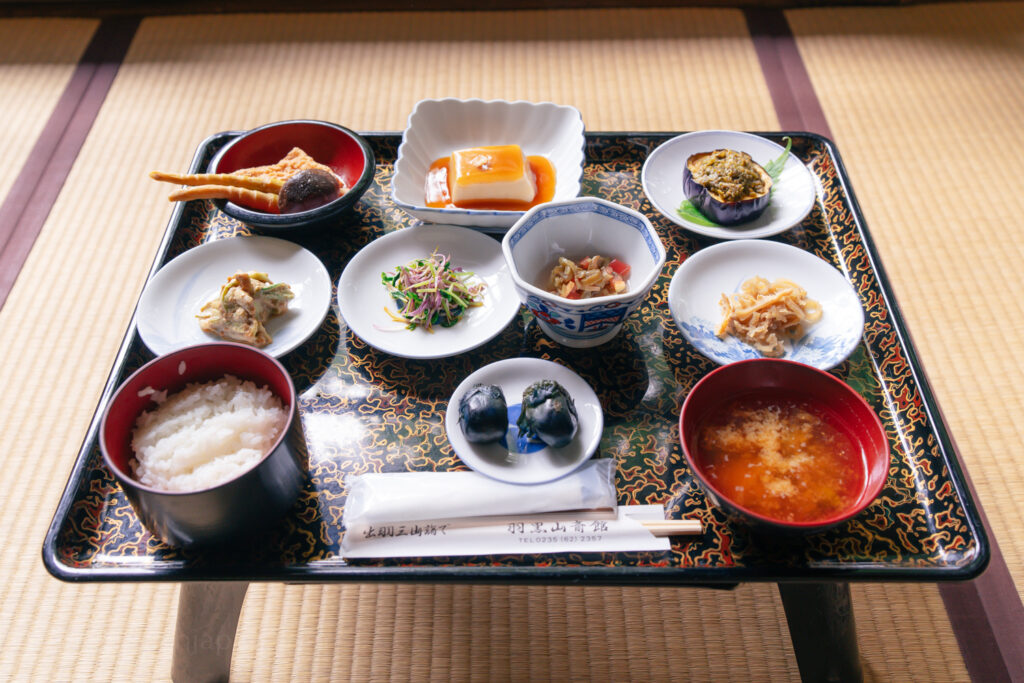
Shojin Ryori can also be enjoyed here on Mt. Haguro with a visit to Saikan, a restaurant facility next to the Dewa Sanzan Shrine on top of Mt. Haguro. This is the spiritual cuisine of the Yamabushi which dates back to the founding of these mountains 14 centuries ago.
For more information on shojin ryori and how to reserve a lunch at Saikan, please see our full article here.
Access
It is possible to access the start of the mountain by bus from Tsuruoka Station. Be mindful that these are old buses that do not have an English-speaking staff or signs.
We advise all guests to consider using a rental car during their stay here in Shonai to get around the tight schedules of buses and to instead relax and freely explore the vast nature of this region. See rental car options here.
Note that if you search Mt. Haguro in Google Maps, it may give you directions to drive to the top of the mountain. Those wishing to climb the mountain from the base should use this address.
〒997-0211 Yamagata-ken, Tsuruoka-shi, Haguromachi Toge, Toge-3

